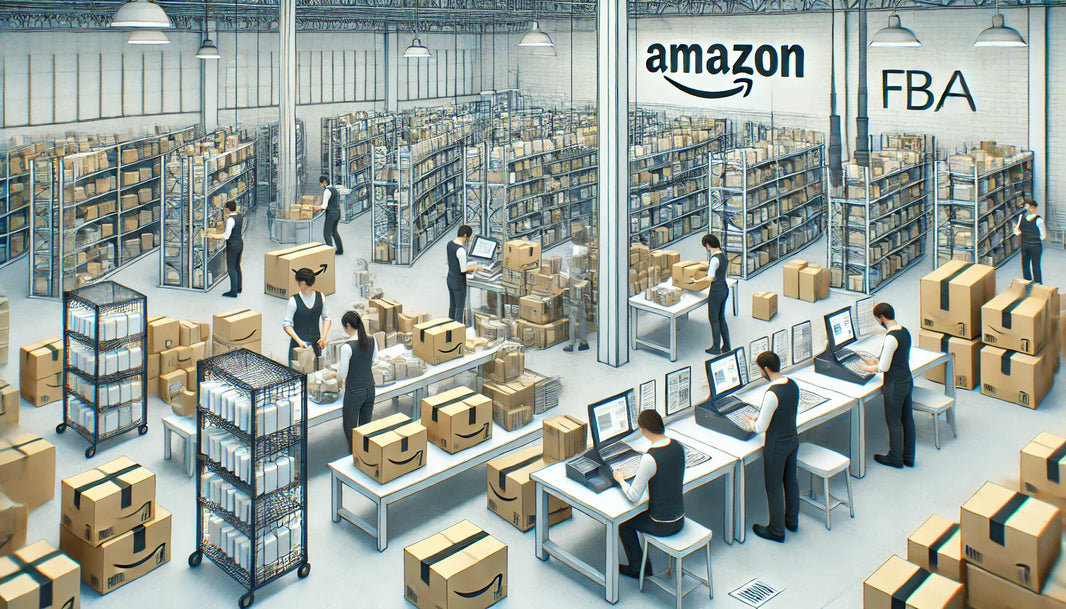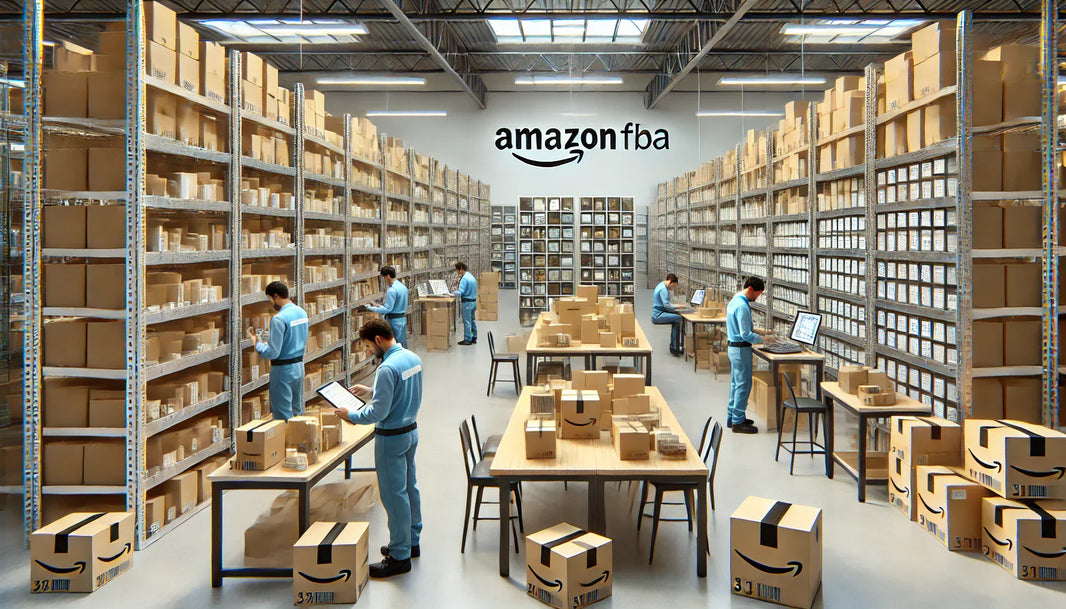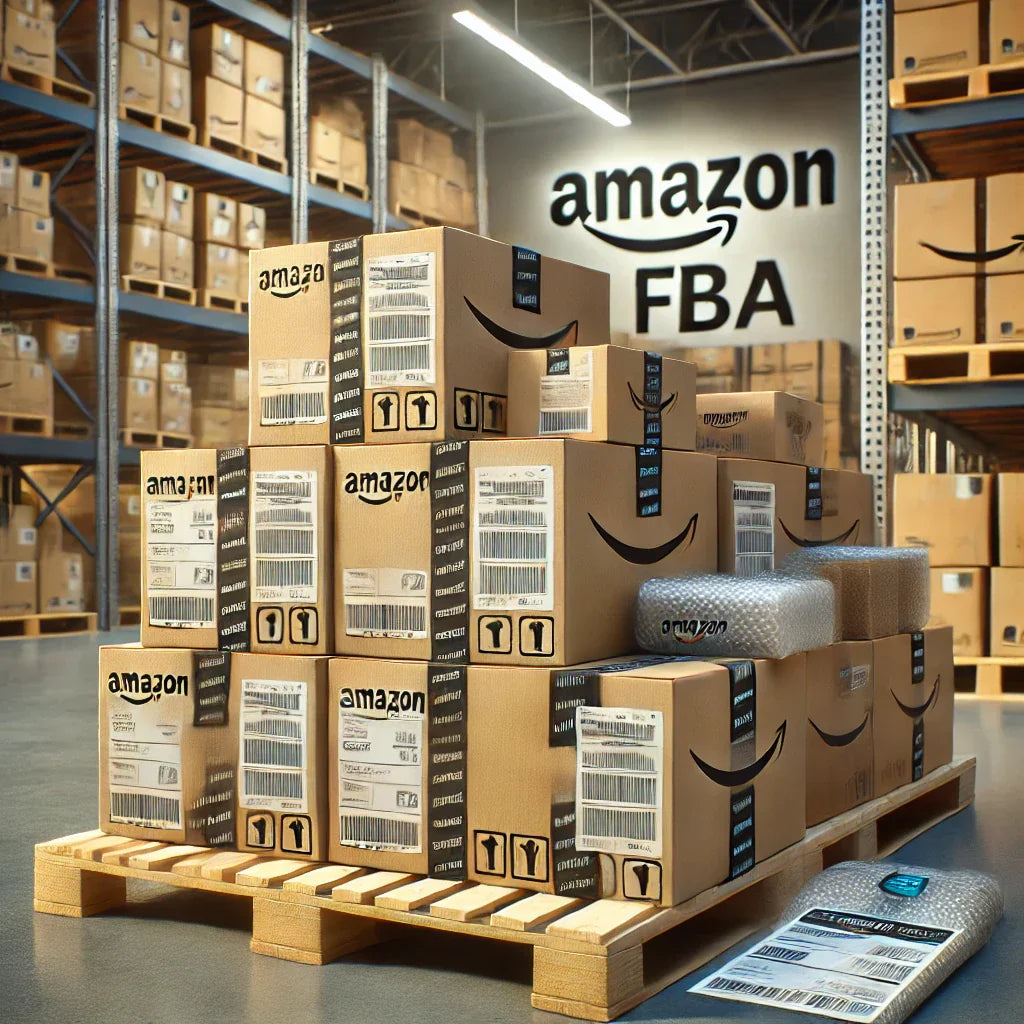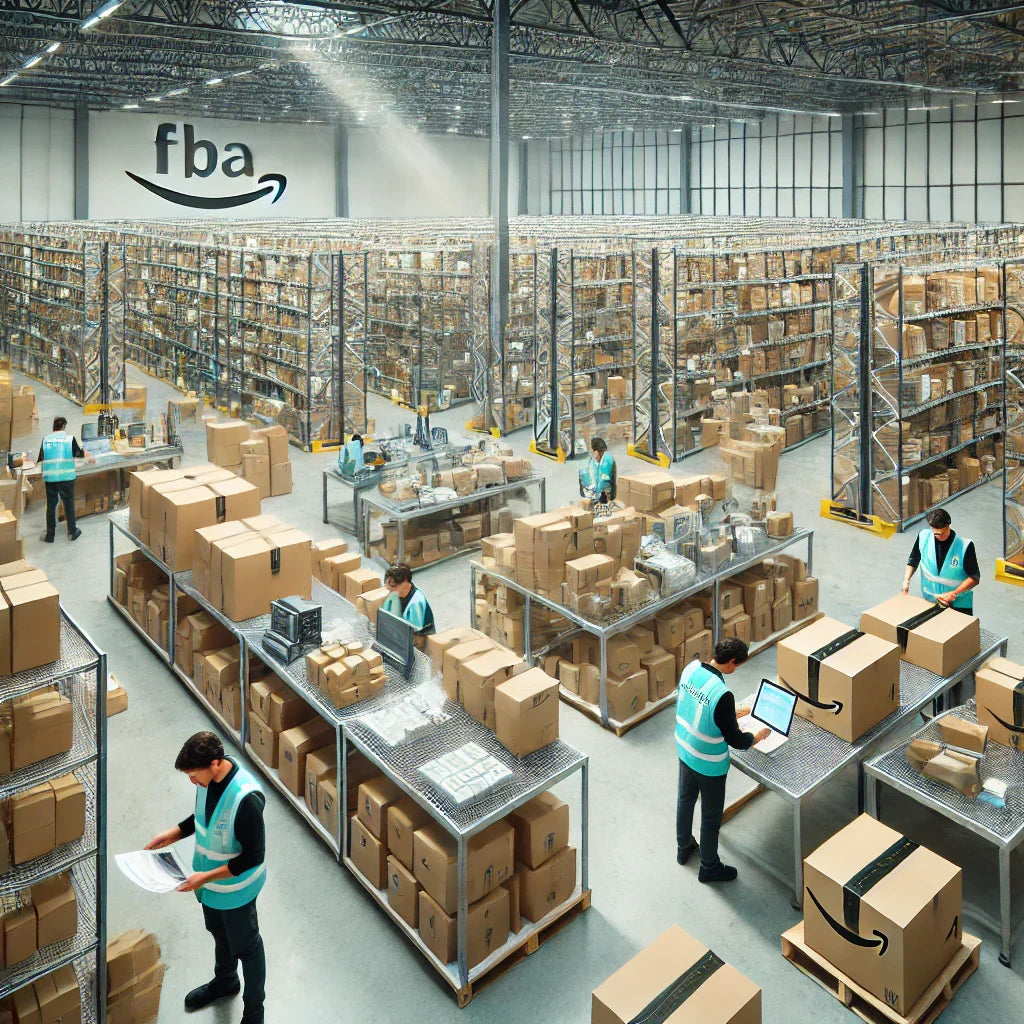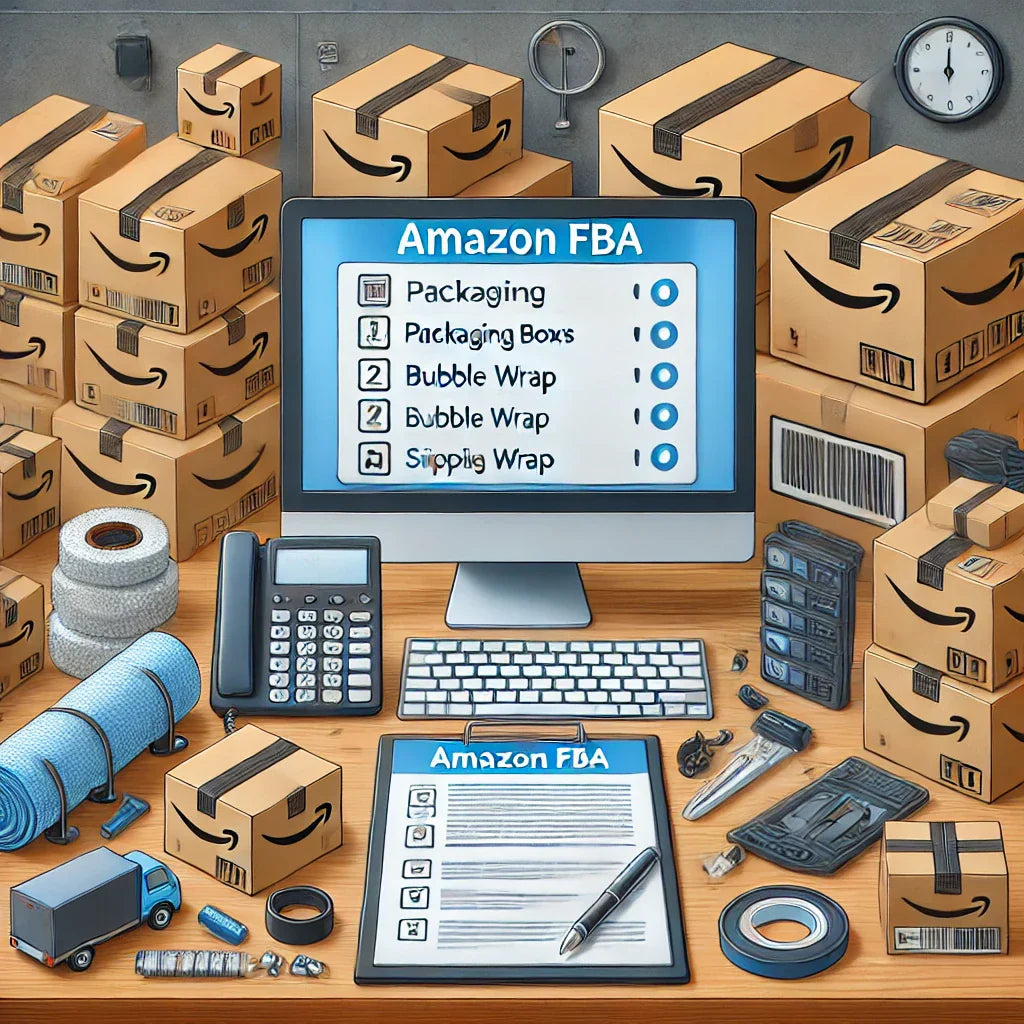In today’s fast-paced global marketplace, the importance of optimizing supply chain operations cannot be overstated. Companies looking to remain competitive are increasingly turning to third-party logistics (3PL) services to streamline their processes, enhance operational efficiency, and cut costs. By leveraging the specialized expertise and advanced technology that 3PL providers offer, businesses can improve supply chain visibility, reduce overheads, and focus more strategically on core competencies. This article explores how partnering with 3PL services can transform logistics management, yielding both short- and long-term benefits for enterprises across various industries.

Understanding 3PL Services: A Brief Overview
Third-party logistics (3PL) services refer to the outsourcing of various supply chain management functions, such as warehousing, inventory management, transportation, and order fulfillment, to external logistics specialists. These providers offer a wealth of experience and access to extensive logistics networks, enabling businesses to scale their operations more effectively.
Companies that incorporate 3PL services benefit from a host of logistical solutions tailored to meet specific industry demands. By tapping into a network of advanced infrastructure and expert staff, businesses can avoid the complexities and significant investments involved in maintaining in-house logistics teams. This strategic partnership allows companies to optimize their resources and adapt swiftly to market fluctuations.
Key Advantages of Partnering with 3PL Providers
The core advantages of working with a 3PL service provider extend beyond cost savings. By integrating these services, businesses can enhance supply chain visibility, foster better relationships with vendors, and focus more acutely on their core competencies. Below are some of the critical benefits:
1. Enhanced Efficiency and Streamlined Operations
3PL providers leverage sophisticated technology, such as warehouse management systems (WMS) and transportation management systems (TMS), to optimize supply chain processes. These tools provide real-time tracking, route optimization, and data analytics, which help companies manage their logistics operations more effectively.
For example, through the use of predictive analytics, 3PL services can forecast demand with greater accuracy, reducing instances of overstocking or understocking. The data-driven insights gained from these technologies enable continuous improvement, leading to leaner, more responsive supply chain operations.
2. Cost Reduction and Improved Financial Performance
One of the primary reasons businesses choose to work with 3PL providers is cost savings. By outsourcing logistics functions, companies can avoid significant capital expenditures on facilities, technology, and training. Instead, they pay a variable cost based on their level of need, which provides greater flexibility and can result in substantial cost savings.
Additionally, 3PLs are adept at negotiating better shipping rates due to their large-scale partnerships with carriers. This capability helps reduce freight costs and leads to more competitive pricing. Furthermore, the efficiencies created by 3PLs minimize fuel consumption, reduce transit times, and decrease error rates, all of which contribute to overall cost reductions.
3. Access to Expertise and Advanced Technology
3PL providers are industry experts with extensive knowledge of the complexities involved in supply chain management. Partnering with them means tapping into their years of experience and adopting best practices. These companies stay abreast of the latest technological innovations, such as automation, robotics, and Internet of Things (IoT) devices, which are designed to improve supply chain visibility and enhance operational accuracy.
For instance, robotic picking systems in warehouses can process orders faster and with fewer errors than manual handling. IoT-enabled sensors monitor the condition and location of goods in real-time, ensuring that shipments remain within optimal conditions throughout transit. By integrating these technologies, companies gain a competitive edge while optimizing their logistics operations.
The Strategic Role of 3PL in Managing Complex Supply Chains
Supply chain complexity has grown due to globalization and the proliferation of e-commerce. Businesses face the challenge of meeting customer expectations for faster delivery times and improved service quality. 3PL services play an essential role in simplifying these complex supply chains through the following strategies:
1. Improved Inventory Management
Effective inventory management is crucial for maintaining a balance between supply and demand. 3PL providers use advanced inventory management systems that offer real-time visibility into stock levels. This transparency helps businesses forecast demand, reduce excess inventory, and avoid stockouts. With better control over inventory, companies can lower holding costs and optimize warehouse space.
Furthermore, 3PLs implement automated reorder points and safety stock measures that ensure uninterrupted product availability. This proactive approach mitigates risks related to stock shortages, particularly during peak seasons.
2. Optimized Transportation Networks
Transportation is a significant contributor to supply chain costs. Through strategic route planning and load consolidation, 3PLs can minimize transit times and reduce fuel expenses. By leveraging their established carrier networks, 3PL providers secure the most efficient and cost-effective shipping solutions.
In addition, 3PLs monitor the performance of different carriers and choose partners that meet strict delivery and service standards. This practice ensures timely deliveries and minimizes the impact of potential disruptions, such as carrier delays or sudden rate changes.
3. Enhanced Customer Experience
Meeting customer expectations has become increasingly challenging, especially with the rise of e-commerce giants setting high service standards. 3PL providers help businesses enhance their customer experience by facilitating faster and more reliable delivery services. Through integrated logistics solutions, 3PLs provide seamless order tracking, quick processing times, and high fulfillment accuracy.
A superior customer experience fosters brand loyalty, resulting in higher repeat business and positive word-of-mouth. For companies looking to gain an edge in a competitive market, the customer satisfaction enabled by efficient 3PL services is invaluable.
3PL Services and Cost Management: A Deep Dive
While operational efficiency is a significant focus, cost management is often the primary driver for businesses considering 3PL services. The ability of 3PLs to reduce costs lies in several critical areas:
1. Economies of Scale
3PL providers work with multiple clients, which allows them to leverage economies of scale. This means that their collective purchasing power and established relationships with carriers enable them to secure better rates and services than an individual business could obtain on its own.
By pooling resources across clients, 3PLs reduce operational costs, and these savings are often passed on to their customers. This model is particularly advantageous for small- to medium-sized enterprises (SMEs) that may lack the negotiating power of larger corporations.
2. Reducing Fixed Overheads
Maintaining in-house logistics teams, warehouses, and technology requires substantial investment. Outsourcing these functions to a 3PL provider turns fixed costs into variable expenses that align with business needs. This flexibility allows companies to scale operations up or down without the burden of idle infrastructure during periods of low demand.
The reduction in fixed overheads means more financial resources can be allocated to strategic growth initiatives or innovation. It also minimizes the risks associated with large-scale infrastructure investments that may not yield the expected return.
3. Lowering Administrative Costs
The administrative burden associated with managing supply chains can be overwhelming. Processing shipments, managing customs documentation, and coordinating between suppliers, carriers, and warehouses demand considerable resources. 3PL providers handle these tasks, allowing companies to streamline their administrative processes and reduce costs.
The integration of software solutions provided by 3PLs helps automate repetitive tasks, enhance communication, and improve workflow management. This automation reduces the labor needed to oversee logistics, contributing to further cost efficiency.
Addressing Common Concerns with 3PL Partnerships
While the benefits of 3PL services are extensive, businesses often have concerns about outsourcing logistics functions. Key apprehensions include the potential loss of control, data security, and service reliability. Addressing these concerns involves choosing a reliable 3PL provider and fostering transparent communication.
1. Maintaining Control Over Operations
A significant worry for companies is losing control over their supply chain. However, most 3PL providers offer comprehensive reporting and data-sharing platforms that give businesses continuous oversight of their logistics operations. By establishing clear contracts and KPIs, companies can ensure their 3PL partner aligns with their service expectations and standards.
2. Data Security and Compliance
In an age of heightened data security concerns, ensuring that a 3PL provider meets regulatory and cybersecurity standards is essential. Reputable 3PLs invest heavily in robust cybersecurity measures and compliance protocols. Businesses should evaluate their potential partner’s security infrastructure, including data encryption and regular audits, to maintain peace of mind.
3. Reliability and Service Quality
The success of a 3PL partnership hinges on the reliability and quality of the services provided. Businesses should conduct thorough research, solicit client testimonials, and check performance metrics before finalizing a partnership. This due diligence helps select a partner known for consistent and dependable service.

Real-World Examples of 3PL Impact
Companies across industries have experienced transformative outcomes by leveraging 3PL services. For example, a mid-sized retailer that outsourced its logistics operations to a 3PL provider reported a 20% reduction in overall supply chain costs and a 30% improvement in delivery times within a year. This improvement was attributed to optimized transportation strategies, better carrier partnerships, and automated inventory management.
Large manufacturers have also benefitted, particularly those navigating complex, global supply chains. By integrating with 3PLs, they were able to mitigate risks related to tariff changes and trade regulations through more adaptive and informed logistics planning.
The Future of 3PL Services in Supply Chain Management
As technology continues to evolve, 3PL providers are expected to integrate even more sophisticated tools into their operations. The incorporation of artificial intelligence (AI), machine learning (ML), and blockchain technology is already reshaping how supply chains are managed. These innovations promise greater transparency, more efficient operations, and enhanced predictive capabilities.
For example, blockchain technology can offer immutable records that improve traceability and accountability throughout the supply chain. AI and ML algorithms can predict disruptions, optimize routes, and recommend alternative logistics strategies, enhancing the responsiveness of 3PL services. Such capabilities mean that in the event of unforeseen disruptions—such as sudden port closures or weather-induced delays—3PL providers can quickly adapt and mitigate potential issues, keeping the supply chain intact and minimizing negative impacts on businesses.
Innovations Transforming 3PL Services
Several technological advancements are making 3PL services more dynamic, adaptable, and cost-efficient. Here are some of the emerging trends that are set to shape the future of third-party logistics:
1. Automation and Robotics
Automation is revolutionizing the logistics industry by streamlining warehouse operations, improving order accuracy, and reducing labor costs. Robotics technology, from autonomous mobile robots (AMRs) to automated guided vehicles (AGVs), is being deployed in warehouses to manage tasks such as sorting, picking, and packing. This shift reduces the dependency on manual labor, which not only accelerates operations but also minimizes human error.
These robotic systems are supported by AI-driven software that learns from historical data to refine and improve processes over time. This means that the longer a business partners with a 3PL provider that employs automation, the more optimized their supply chain becomes.
2. Artificial Intelligence and Predictive Analytics
AI and predictive analytics are crucial for understanding and anticipating supply chain needs. With the ability to analyze vast amounts of data and generate actionable insights, AI tools help 3PL providers forecast demand, predict potential disruptions, and optimize inventory levels. For example, predictive algorithms can analyze past sales data, market trends, and seasonal demand fluctuations to suggest inventory adjustments, ensuring that businesses maintain just the right amount of stock at any given time.
Moreover, AI-powered route optimization tools help 3PL providers determine the most efficient delivery paths, taking into account real-time traffic conditions, weather patterns, and road restrictions. This level of precision contributes to faster delivery times, lower fuel consumption, and overall cost savings.
3. Internet of Things (IoT)
IoT devices have become integral to supply chain transparency. Sensors embedded in trucks, containers, and pallets provide real-time updates on the location and condition of goods in transit. These sensors monitor variables such as temperature, humidity, and vibration, ensuring that perishable or sensitive items maintain their integrity throughout their journey.
For industries such as pharmaceuticals and food, where maintaining the cold chain is paramount, IoT technology employed by 3PL services ensures compliance with safety standards and reduces spoilage rates. The data collected by IoT devices helps logistics teams react swiftly to any anomalies, rerouting shipments or adjusting environmental controls as necessary.
How 3PL Services Adapt to Seasonal and Market Demands
One of the significant challenges in supply chain management is handling fluctuations in demand, whether due to seasonal peaks or market shifts. 3PL providers are uniquely equipped to help businesses navigate these changes smoothly.
1. Scalability During Peak Seasons
Retailers often face a surge in orders during holidays or promotional events, putting immense pressure on their logistics operations. 3PL providers have the infrastructure and staffing flexibility to scale services quickly in response to such spikes. By utilizing shared warehousing space and cross-docking capabilities, they can manage increased volumes without the delays associated with setting up additional in-house resources.
Seasonal scalability helps businesses maintain high service levels, avoiding the pitfalls of delayed shipments or stockouts, which can damage customer trust. The ability of 3PLs to flex operations ensures that companies can handle busy periods efficiently while still reaping the benefits of cost-effective logistics during slower months.
2. Adaptation to Global Market Changes
In a globalized economy, businesses must be ready to adapt to new regulations, tariffs, and trade agreements that can impact supply chains. 3PL providers help clients navigate these complexities by offering expertise in international logistics and customs compliance. Their knowledge of global markets enables businesses to pivot their strategies quickly, ensuring minimal disruption and maintaining cost-efficiency.
For example, during periods of political uncertainty or shifts in trade agreements, 3PL providers can reroute shipments through alternative trade corridors, find cost-effective alternatives, and ensure that goods reach their destination on time while complying with new regulations.
Reducing Environmental Impact with 3PL Solutions
Sustainability has become a key consideration for businesses seeking to optimize their supply chains. 3PL providers are playing an instrumental role in helping companies reduce their environmental footprint while maintaining operational efficiency.
1. Green Logistics Practices
Many 3PL providers have adopted sustainable logistics practices, including the use of eco-friendly packaging, fuel-efficient vehicles, and energy-saving warehouse technologies. By consolidating shipments and using route optimization software, 3PLs help reduce the number of miles traveled, minimizing greenhouse gas emissions and fuel costs.
Warehouses managed by 3PLs often integrate energy-efficient lighting, temperature control systems, and solar panels, further contributing to sustainability goals. These measures help clients align their operations with environmental, social, and governance (ESG) criteria, boosting their brand image as environmentally responsible companies.
2. Collaboration in Reverse Logistics
Reverse logistics, or the management of product returns and recycling, is another area where 3PLs make a substantial impact. They streamline the process of handling returned items, refurbishing or recycling products when applicable. This practice not only minimizes waste but also helps businesses reclaim value from returned goods.
3PL providers with expertise in reverse logistics use data analytics to track return trends and implement improvements that reduce return rates and enhance product lifecycle management. By optimizing reverse logistics processes, businesses reduce operational costs and contribute to a circular economy model.
Overcoming Challenges in 3PL Integration
While 3PL services offer numerous benefits, integrating them into a company's existing operations can present challenges. Companies must address these challenges to fully leverage the potential of 3PL partnerships.
1. Seamless Integration with Existing Systems
One of the primary obstacles businesses face when onboarding a 3PL provider is ensuring compatibility with their current systems. Smooth integration requires advanced technology solutions that enable seamless communication between the 3PL's systems and the client’s ERP (Enterprise Resource Planning) or WMS (Warehouse Management System). Companies should prioritize choosing 3PL providers with a proven track record of successful system integrations to avoid disruptions.
Investing time in integration testing, training, and onboarding helps mitigate these challenges, ensuring that data flows smoothly between systems and operations remain synchronized.
2. Balancing Standardization with Customization
Companies often seek 3PL providers that can offer standardized solutions while still accommodating unique requirements. Striking the right balance between standardized services and customized solutions can be challenging, especially for businesses with specialized logistics needs. Effective partnerships are built on transparency, with both parties clearly outlining expectations and capabilities from the outset.
3. Maintaining Quality Control
Outsourcing logistics functions to a third party raises valid concerns about maintaining consistent quality control. Businesses must work closely with their 3PL provider to set clear service-level agreements (SLAs) and key performance indicators (KPIs). Regular performance reviews and audits are necessary to ensure that the 3PL partner meets or exceeds the agreed standards.

Case Studies of Successful 3PL Implementations
Real-world examples of how businesses have benefited from 3PL partnerships demonstrate the tangible impact on operational efficiency and cost savings. Here are a few case studies showcasing the transformative power of 3PL services:
1. Mid-Sized Retailer: Meeting Seasonal Demand
A regional retail chain that specialized in home goods faced challenges every holiday season due to sudden surges in demand. The company struggled with fulfillment delays, which led to customer dissatisfaction and missed revenue opportunities. By partnering with a 3PL provider, the retailer gained access to scalable warehouse space and advanced inventory management tools.
During peak shopping seasons, the 3PL provider expanded the retailer’s storage capabilities and increased workforce allocation to manage higher order volumes. Automated sorting and picking technologies reduced processing times significantly. As a result, the company reported a 40% improvement in order fulfillment speed and a 25% increase in customer satisfaction during peak periods.
2. Global Manufacturer: Streamlining International Shipping
A large-scale electronics manufacturer operating across multiple continents experienced logistical headaches due to varying customs regulations, inconsistent shipping schedules, and delayed deliveries. The complexity of international shipping led to high operational costs and poor supply chain visibility.
Partnering with a specialized 3PL provider changed the game for this manufacturer. The 3PL brought expertise in customs brokerage, streamlined documentation processes, and leveraged a global carrier network to reduce transit times. The manufacturer saw a 30% reduction in shipping costs and a marked improvement in delivery reliability, strengthening its market position.
3. E-commerce Startup: Gaining Competitive Edge
A startup in the e-commerce industry sought to compete with larger, well-established players but faced logistical bottlenecks that hampered growth. The founder decided to outsource fulfillment and delivery operations to a 3PL provider experienced in handling fast-moving consumer goods (FMCG). The 3PL’s advanced warehouse automation systems enabled rapid order processing and real-time inventory tracking.
With the 3PL partnership, the startup managed to offer two-day shipping and a reliable returns process, attracting more customers and increasing its market share by 50% within the first year. This success highlighted how 3PLs can empower smaller businesses to compete with major players without the same level of capital investment.
The Role of 3PLs in Post-Pandemic Supply Chain Recovery
The COVID-19 pandemic posed significant challenges to global supply chains, including disruptions in transportation, labor shortages, and fluctuating demand patterns. Businesses that partnered with agile 3PL providers were better positioned to navigate these difficulties. Here’s how 3PLs supported supply chain resilience in the post-pandemic era:
1. Managing Supply Chain Disruptions
During the pandemic, many companies experienced delays due to closed borders and disrupted trade routes. 3PL providers with established global networks could quickly reroute shipments and adapt to changing regulations. By leveraging their extensive carrier relationships, 3PLs helped clients maintain a steady flow of goods, mitigating supply chain bottlenecks.
2. Adapting to Changes in Consumer Behavior
E-commerce saw explosive growth during the pandemic as consumers shifted to online shopping. Businesses that lacked the infrastructure to handle the surge in online orders turned to 3PL providers for support. The fulfillment capabilities of 3PLs enabled businesses to meet customer expectations for quick, reliable shipping, preventing losses in market share.
3. Enhancing Health and Safety Protocols
The need for stringent health and safety measures brought additional complexities to supply chain operations. 3PL providers quickly adapted by implementing contactless deliveries, frequent sanitization, and social distancing practices in warehouses. This adaptability allowed businesses to continue operations while ensuring the safety of employees and customers.
Preparing for Future Supply Chain Challenges with 3PLs
With supply chain disruptions becoming more frequent due to geopolitical issues, natural disasters, and economic volatility, businesses must proactively prepare for future challenges. 3PL providers play a key role in helping companies build more resilient supply chains.
1. Developing Diversified Sourcing Strategies
Relying on a single source for materials or products can be risky in an unpredictable global market. 3PL providers assist companies in developing diversified sourcing strategies by identifying alternative suppliers and logistics routes. This approach ensures that if one supply chain link fails, others are available to keep operations running smoothly.
2. Incorporating Advanced Risk Management Tools
3PLs equipped with predictive analytics software can forecast potential risks such as severe weather conditions, political unrest, or transportation strikes. These tools enable 3PL providers to recommend preemptive measures that minimize disruptions, such as adjusting shipment schedules or rerouting cargo.
By integrating AI-driven risk management tools, businesses can stay one step ahead of potential disruptions and ensure supply chain continuity.
Detailed Comparison: 3PL vs. 4PL Services
While 3PLs offer considerable advantages in managing logistics functions, some businesses may consider the additional support provided by fourth-party logistics (4PL) services. Understanding the distinctions between these two models can help businesses choose the right partner for their supply chain needs.
1. Scope of Services
3PLs typically handle transportation, warehousing, and fulfillment, providing a hands-on approach to managing logistics. On the other hand, 4PLs act as strategic overseers of the entire supply chain. A 4PL provider coordinates and manages multiple 3PL services on behalf of the client, taking a more comprehensive and integrated approach to supply chain management.
This broader oversight allows 4PLs to provide a single point of contact for all logistics activities, making them ideal for companies that require end-to-end supply chain optimization.
2. Control and Customization
3PLs offer businesses the ability to retain control over certain aspects of their logistics while outsourcing specific operations. This model works well for companies that prefer to manage their supply chains with some degree of oversight. In contrast, 4PLs handle all aspects of the supply chain, including strategic planning and operational execution, providing a more hands-off approach for clients.
For companies looking to streamline complex supply chains with minimal internal resources, a 4PL can be the ideal partner. However, businesses that want more direct involvement might find 3PL partnerships more suitable.
3. Cost Implications
While 3PL services can be cost-effective by reducing capital expenditures and leveraging economies of scale, 4PLs may come with higher fees due to their comprehensive management services. Businesses must weigh the cost against the level of service they require to determine the most beneficial partnership.
How to Choose the Right 3PL Partner for Your Business
Selecting the right 3PL provider is crucial for maximizing the benefits of outsourcing logistics. Here are key considerations when evaluating potential partners:
1. Industry Experience and Expertise
Ensure that the 3PL provider has experience working within your industry. Industry-specific expertise can lead to better solutions tailored to your unique supply chain challenges. For example, a 3PL experienced in perishable goods will have the necessary cold chain logistics infrastructure, while a 3PL focusing on consumer electronics will understand the nuances of handling sensitive equipment.
2. Technological Capabilities
Evaluate the technological solutions a 3PL provider offers, such as warehouse management systems, transportation management platforms, and data analytics tools. These technologies play a critical role in enhancing visibility, automating processes, and providing real-time data for better decision-making.
Choosing a 3PL that embraces innovation ensures that your business stays competitive in an environment where technology rapidly evolves.
3. Scalability and Flexibility
Your logistics partner should be capable of scaling operations up or down based on your business needs. Whether you're experiencing seasonal peaks or expanding into new markets, the 3PL should have the capacity to adjust accordingly without compromising service quality.
4. Financial Stability and Reliability
A financially stable 3PL is more likely to provide consistent service without interruptions. Conduct thorough research, request financial reports, and review customer testimonials to assess a potential partner’s reliability.
5. Strong Customer Service
A successful 3PL partnership relies on excellent communication and support. Choose a provider that values transparency and provides dedicated account managers or 24/7 customer support. Responsive customer service helps address issues promptly, reducing the risk of delays or misunderstandings.
Future-Proofing Your Supply Chain with 3PL Services
Investing in a 3PL partnership is not just about solving immediate logistics problems; it’s a strategic move to build a future-proof supply chain. As global markets evolve, businesses must remain flexible, efficient, and resilient to maintain their competitive edge.

Leveraging Data and Analytics for Supply Chain Optimization
In modern logistics, data is more than just numbers; it is a valuable asset that can transform how businesses operate. 3PL providers, equipped with advanced data collection and analysis tools, help companies make informed decisions that drive efficiency and cost reduction.
1. Real-Time Tracking and Reporting
3PL providers use sophisticated transportation management systems (TMS) and warehouse management systems (WMS) that offer real-time tracking and reporting. These tools provide comprehensive visibility into the movement of goods, enabling businesses to monitor shipments, anticipate delays, and take corrective action before disruptions escalate.
Real-time data helps businesses improve their delivery times and manage customer expectations by providing accurate tracking information. This level of transparency not only builds trust but also enhances customer satisfaction and retention.
2. Enhanced Forecasting Capabilities
One of the standout benefits of 3PL partnerships is the access to predictive analytics. By analyzing historical data and current market trends, 3PLs can forecast demand more accurately, helping businesses plan inventory levels, staffing, and transportation needs. This reduces the risks associated with overstocking or stockouts, which can lead to financial loss and customer dissatisfaction.
Advanced forecasting capabilities also help businesses prepare for peak periods and avoid the pitfalls of sudden demand surges. This proactive approach ensures that companies remain agile and adaptable to changing market conditions.
3. Custom Reports and KPI Monitoring
3PL providers offer custom reporting tools that allow businesses to track key performance indicators (KPIs) relevant to their logistics operations. These reports can cover metrics such as order fulfillment rates, on-time delivery percentages, and average shipping costs. By continuously monitoring these KPIs, companies can identify inefficiencies and work with their 3PL partners to make data-driven adjustments.
The ability to customize reports means businesses can focus on metrics that align with their strategic goals, whether that’s reducing delivery times, improving order accuracy, or cutting operational costs.
Overcoming Barriers to 3PL Integration
While the advantages of partnering with a 3PL provider are compelling, businesses often face hurdles when integrating these services. Here’s how to navigate some common challenges:
1. Aligning Business Objectives
Ensuring that a 3PL provider aligns with a company’s overall business objectives is crucial for a successful partnership. Misalignment can lead to conflicts, inefficiencies, and unmet expectations. To overcome this barrier, companies should engage in thorough discussions during the selection process, outlining specific goals, service expectations, and growth plans.
Regular strategic reviews and performance evaluations can help maintain alignment over time, ensuring that the 3PL partner continues to meet the evolving needs of the business.
2. Bridging Cultural and Communication Gaps
Cultural differences and communication styles can sometimes create friction between a business and its 3PL partner, especially in international collaborations. Establishing clear communication channels and setting expectations for response times, reporting methods, and escalation protocols can help bridge these gaps.
Investing in relationship-building activities, such as regular meetings and site visits, fosters trust and improves collaboration. Open communication facilitates quicker issue resolution and enhances overall partnership effectiveness.
3. Addressing Resistance to Change
Introducing a 3PL provider into a company's supply chain operations often involves significant changes in processes and workflows. Employees may resist these changes due to fear of job loss, shifts in responsibilities, or unfamiliarity with new systems. Addressing this resistance requires clear communication from leadership, explaining the benefits of the transition and how it will enhance their roles rather than replace them.
Training sessions, workshops, and collaborative onboarding processes can make employees feel more comfortable with the integration and help them adapt to new systems more smoothly.
Expanding the Role of 3PLs in Omnichannel Logistics
As consumer expectations for seamless shopping experiences continue to grow, businesses are adopting omnichannel strategies to meet these demands. 3PL providers play an integral role in supporting omnichannel logistics by ensuring consistent, efficient operations across all sales channels.
1. Unified Inventory Management
A significant challenge of omnichannel logistics is maintaining consistent inventory levels across multiple sales platforms, including online stores, physical locations, and third-party marketplaces. 3PL providers offer unified inventory management systems that update stock levels in real-time, preventing overselling or stock discrepancies.
These systems ensure that customers receive accurate information about product availability, reducing the risk of canceled orders and enhancing the shopping experience. Businesses benefit from optimized stock distribution and better inventory control, leading to lower holding costs and improved turnover rates.
2. Streamlined Fulfillment Processes
Omnichannel fulfillment often requires a mix of delivery options, such as in-store pickup, home delivery, and same-day shipping. 3PL providers with expertise in omnichannel logistics can manage these diverse fulfillment methods efficiently. They can route orders to the nearest distribution center or store, minimizing delivery times and costs.
By utilizing cross-docking practices and decentralized warehouse locations, 3PLs ensure that products reach customers faster. This capability is especially important for meeting the high expectations set by major e-commerce platforms offering rapid delivery services.
3. Enhanced Returns Management
A robust returns process is a vital component of any omnichannel strategy. 3PL providers streamline reverse logistics by handling the entire returns process, from receiving and inspecting returned items to restocking or refurbishing products as needed. Efficient returns management not only enhances customer satisfaction but also allows businesses to recapture value from returned products.
3PLs can also provide data insights on return trends, helping businesses identify potential issues with products and make improvements. This proactive approach reduces return rates and associated costs.
How 3PL Providers Support Business Expansion
For businesses looking to expand into new markets, partnering with a 3PL provider can accelerate the process and minimize risks. 3PLs offer the infrastructure and local expertise needed to establish a presence in unfamiliar regions.
1. Simplified Market Entry
Entering a new market comes with challenges such as unfamiliar customs regulations, local carrier networks, and language barriers. 3PL providers with an established presence in target markets can navigate these challenges efficiently, ensuring compliance with local laws and facilitating smooth operations. This simplifies the process for businesses, allowing them to focus on marketing and customer acquisition rather than logistics.
2. Leveraging Local Expertise
3PL providers have an in-depth understanding of the local market, including consumer preferences, peak seasons, and competitive shipping rates. This local expertise allows businesses to tailor their operations to meet regional demands. For instance, a 3PL in a region known for weather-related delays will have contingency plans and alternative routes to prevent disruptions.
Local insight can also help companies optimize delivery times and enhance the customer experience, fostering brand loyalty in new markets.
3. Infrastructure and Scalability
Expanding operations requires significant investment in warehouses, staff, and technology. 3PL providers offer scalable solutions that eliminate the need for businesses to invest in their own infrastructure. This scalability is crucial for businesses that want to test the waters in new markets without committing to long-term, high-cost investments.
By partnering with a 3PL, companies can adjust their logistics support as they grow, scaling services to meet increasing demand without the delays and capital costs associated with building logistics capabilities from scratch.
Building a Resilient Supply Chain: Long-Term Benefits of 3PL Partnerships
Partnering with a 3PL provider offers more than just immediate cost savings and operational improvements. Over time, these partnerships contribute to building a resilient supply chain capable of adapting to market changes and unforeseen disruptions.
1. Continuous Improvement and Innovation
3PL providers continually invest in the latest logistics technologies and process improvements to stay competitive. Businesses that partner with a forward-thinking 3PL benefit from these innovations without having to invest directly. This ongoing improvement enhances logistics efficiency and helps businesses stay ahead of industry trends.
3PLs also foster a culture of continuous improvement through regular performance reviews and client feedback loops. By evaluating the outcomes of past strategies, 3PL providers refine their operations, leading to incremental gains in service quality and cost efficiency.
2. Risk Mitigation and Business Continuity Planning
Supply chain disruptions, whether due to natural disasters, political instability, or market shifts, can have significant repercussions. 3PL providers play an essential role in business continuity planning by preparing for potential disruptions and having response strategies in place. This preparedness ensures that businesses experience minimal downtime and can recover quickly from supply chain interruptions.
For example, during transportation strikes or sudden port closures, a well-prepared 3PL can activate pre-arranged contingency plans, rerouting shipments to alternative carriers or ports to avoid delays.
3. Sustainability and Ethical Practices
Many 3PL providers are increasingly focusing on sustainability, implementing environmentally friendly practices to reduce their carbon footprint. By outsourcing to a 3PL committed to green logistics, businesses can meet their sustainability goals without extensive overhauls to their own operations.
Green initiatives include fuel-efficient transportation methods, reusable packaging solutions, and strategic placement of warehouses to reduce transit distances. Collaborating with a 3PL provider that prioritizes sustainability not only benefits the environment but also appeals to eco-conscious consumers and enhances brand reputation.

Conclusion
The value of partnering with a third-party logistics (3PL) provider extends well beyond simple cost reduction. It encompasses a strategic approach that enhances supply chain efficiency, drives operational improvements, and fosters sustainable growth. From leveraging advanced technology and real-time data analytics to offering scalability and expertise in omnichannel logistics, 3PL providers have become indispensable allies in navigating the complexities of modern supply chains.
By outsourcing logistics to a capable 3PL, businesses can focus on their core competencies, improve customer satisfaction, and remain adaptable in an ever-changing market landscape. Whether addressing seasonal demand, expanding into new markets, or preparing for future challenges, 3PL services equip companies with the tools and support they need for long-term success.
The decision to engage a 3PL partner should be made with careful consideration of the provider's capabilities, industry experience, and alignment with the company’s strategic goals. When executed effectively, a 3PL partnership is not just an operational improvement—it is a pathway to a more resilient, efficient, and competitive business.
Read More
- What is 3PL? Understanding the Basics of Third-Party Logistics
- Top Benefits of Using a 3PL Provider for Your Business
- 3PL vs. 4PL: Key Differences and How to Choose the Right Logistics Partner
- Choosing the Best 3PL Provider: Essential Factors to Consider
- The Future of 3PL: Emerging Trends in Third-Party Logistics
- How 3PL Logistics Solutions Empower E-commerce Businesses to Scale


